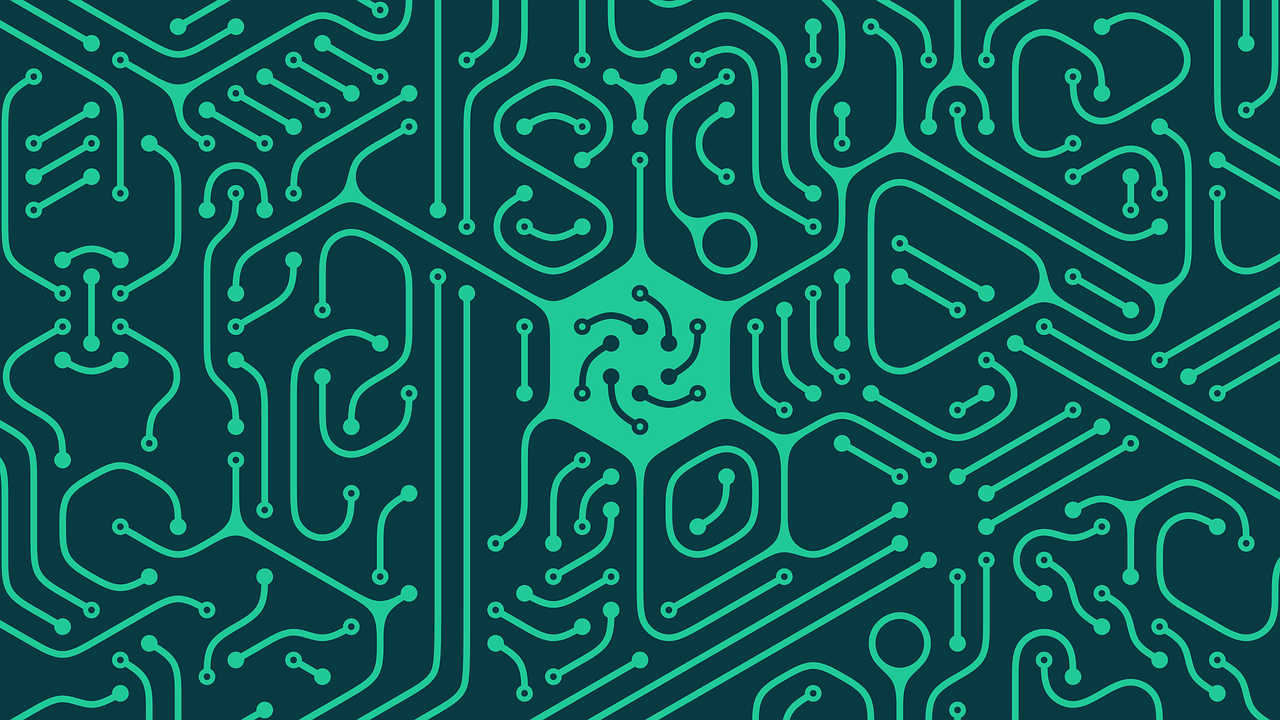Integration of Machine Learning into Proxy Management for Adaptive Scraping
 Victor Uzoagba
Victor Uzoagba
Introduction
Web scraping has become an important source for businesses to collect data from the web for use in competitive analysis, pricing strategies, and market research. However, the increased sophistication in anti-scraping technologies has gotten scraping operations faced with huge challenges that include IP blocks, rate-limiting, and CAPTCHA systems. Modern websites have advanced detection mechanisms that make large-scale scraping practically unreachable without adaptive approaches.
This is where ML comes in handy. Using ML algorithms, scrapers can learn from field dynamics to stay unblocked throughout the process of extraction and thus make it smooth and easy. Besides, proxy management is considered a necessary ingredient of scraping in IP rotation to bypass location-based restrictions. When integrated with machine learning, it can be optimized for higher success rates and lower operational costs. In this post, we shall see how proxy management could be combined with machine learning for adaptive and scalable web scraping.
Overview of Proxy Management in Web Scraping
The backbone of any large-scale scraping operation is proxy management. A proxy server sits between the client (scraper) and the target website. This helps the scrapers disguise their identity for purposes of not being detected. There are several kinds of proxies, which are very much employed in web scraping:
Residential proxies are IP addresses provided by ISPs to homeowners. While they really introduce high anonymity, the residential proxies price can't be afforded easily.
Datacenter proxies, although cheaper and speedier, are easier to detect since they originate from data centers, not from ISPs.
Rotating proxies: It includes rotation in several IP addresses to avoid dependence on one IP address getting blocked. This is the most common approach in high-scale scraping operations.
The traditional way of handling proxies includes their configuration and rotation by hand, according to predefined intervals. When web scraping, this way of handling is inefficient, especially when a website is dynamic and continuously updates its anti-scraping measures. This can result in blocked proxies or flagged requests, to which more intelligent solutions would be required to avoid such issues.
Machine Learning for Scraping Adaptation
Machine learning offers a pretty efficient method of handling this kind of randomness in anti-scrape measures. Active scraping allows scrapers to respond dynamically to changes in the defenses of a target website. The machine learning models can be trained to find blocking patterns, predict when a proxy might get blocked, and even solve CAPTCHAs automatically.
Common applications of machine learning in web scraping:
Predictive models: These predict whether a proxy or request is likely to be blocked by analyzing historical data from scraping attempts. That would enable one to proactively make decisions on a probable block-for instance, rotating proxies.
Classification models: These help in identifying and solving CAPTCHAs or other anti-scraping mechanisms; thus, the scraper would go through a website without interruption.
Decision-making algorithms: That could decide on the optimal point to rotate proxies, manage request rates, or switch the strategy utilized for scraping based on the target website's behavior.
With machine learning integrated, scraping tools will transition from static systems into dynamic adaptive scrapers empowered by real-time reactions against the obstacles created by modern web defenses.
Integrating Machine Learning with Proxy Management
When one combines machine learning with proxy management, he gets a system that automatically adapts to a wide variety of challenges. Well, here's how such a system can be structured:
Scraper component: This is essentially the very basic web scraping tool in charge of sending requests and gathering data from websites.
Proxy Management Layer: This layer is utilized for IP rotation and management. It doesn't lean on any static rules. Instead, it interfaces with the machine learning model to decide when to rotate proxies, which proxy to use, and at what point to throttle the requests to evade detection.
Machine Learning Layer: It analyzes data for patterns of blocking, makes decisions about how to use proxies, solves CAPTCHAs, and manages requests.
These anomaly detection models would, therefore, help in the identification of any flagging or blocking of proxies so that control can be taken and switched to other proxies before an issue arises. Reinforcement learning algorithms make the system smarter by picking the best proxies to use at any given point in time. Clustering models can classify websites based on anti-scraping techniques and allow for the adjustment of a scraping strategy.
Following are some of the key benefits derived by integrating machine learning with proxy management:
Higher success rates: By using machine learning models, scraping strategies could be adapted to the particular nature of defenses involved for a target website.
Cost efficiency: It grants the capability for machine learning to optimize proxy usage, hence reducing the urge for constant IP rotation and bringing down costs related to proxies. This identifies the perfect time for proxy rotation that could minimize unwanted requests and lengthen the life of a proxy.
Scalability: Using machine learning makes adaptive scraping systems capable of scraping large-scale websites due to the reduced risk of getting banned. Over time, as the system experiences more and more, it gets better and starts tackling more complex anti-scraping mechanisms.
Speedy response to changing anti-scraping systems: Websites also renovate their defenses against scrapers periodically. The adaptive system will react sooner to such changes and assure continuity in the gathering of data without human contact.
Challenges and Considerations
While machine learning has a number of great advantages when it comes to adaptive scraping, a variety of challenges have to be considered:
- Data quality for the machine learning model: Machine learning requires high-quality training data. In web scraping this involves collecting labelled data of failures of a scrape-blocks or a CAPTCHA have to be labelled, for example. Besides that, models have to be retrained regularly as anti-scraping mechanisms are continuously evolving.
Resource Consumption: Plugging machine learning into a scraping system means increasing computational overhead. Predictive and decision-making algorithms, in real time, are sure to be resource-intensive and may require investments in more powerful infrastructure.
Compliance and Ethical Consideration: There are several legal and ethical limits to the conducting of web scraping. Firms should check if their operations are within legislation such as the General Data Protection Regulation (GDPR) or website terms of service. Besides that, scrapers also have to be sensitive to privacy and personal data and must be ethically considerate while using the information fetched.
Tools and Technologies
Generally speaking, one can count on a number of different tools and technologies to implement machine learning in an adaptive scraping system. To name a few:
Proxy management platforms - Bright Data, Oxylabs, ScraperAPI
These are advanced solutions to manage proxies in an adaptive scraping system. Machine learning frameworks - TensorFlow, PyTorch, Scikit-learn
All of those are general frameworks for building the models, supporting the functions of proxy rotation, CAPTCHA solving, anomaly detection.
Examples of integrating: In general, ML with the proxy management may be implemented as custom algorithms detecting proxy blocks or third-party API integrations solving CAPTCHAs. Also, real case studies from companies scraping large e-commerce sites or travel platforms prove how such adaptive scraping increases efficiency and reduces the number of blocks.
Conclusion
It is almost invincible when machine learning gets integrated with proxy management--the system can crack even the most sophisticated anti-scraping mechanism. By combining the strength of both technologies, businesses can increase the success rates for scraping, scale data collection easily, and reduce operational costs. From the perspective that web scraping has always been a highly innovative field, machine learning will definitely play a critical role in evolving scraping operations: making them more intelligent, efficient, and adaptive.
For businesses that want to stay ahead, adapting scraping solutions is instrumental in as far as continued access to the data which fuels their operations is concerned.
Subscribe to my newsletter
Read articles from Victor Uzoagba directly inside your inbox. Subscribe to the newsletter, and don't miss out.
Written by

Victor Uzoagba
Victor Uzoagba
I'm a seasoned technical writer specializing in Python programming. With a keen understanding of both the technical and creative aspects of technology, I write compelling and informative content that bridges the gap between complex programming concepts and readers of all levels. Passionate about coding and communication, I deliver insightful articles, tutorials, and documentation that empower developers to harness the full potential of technology.